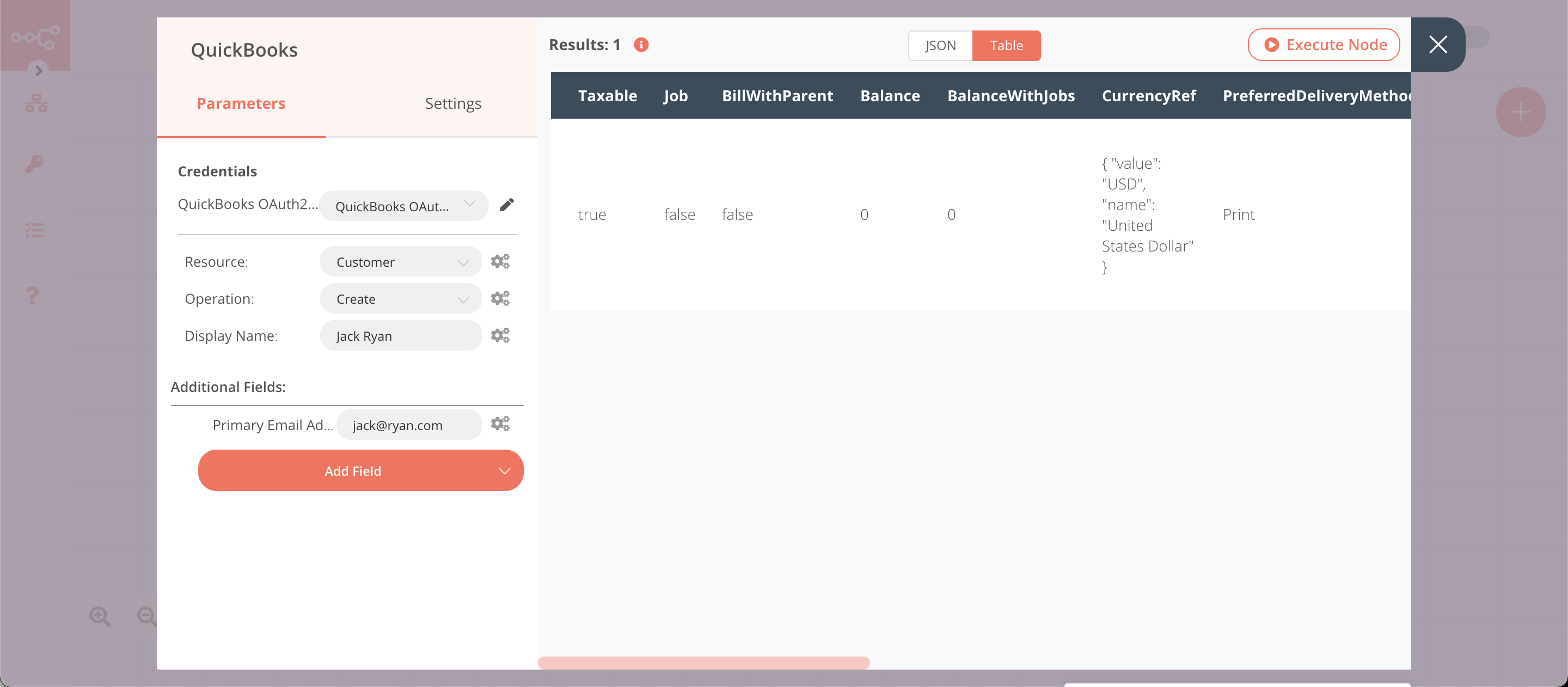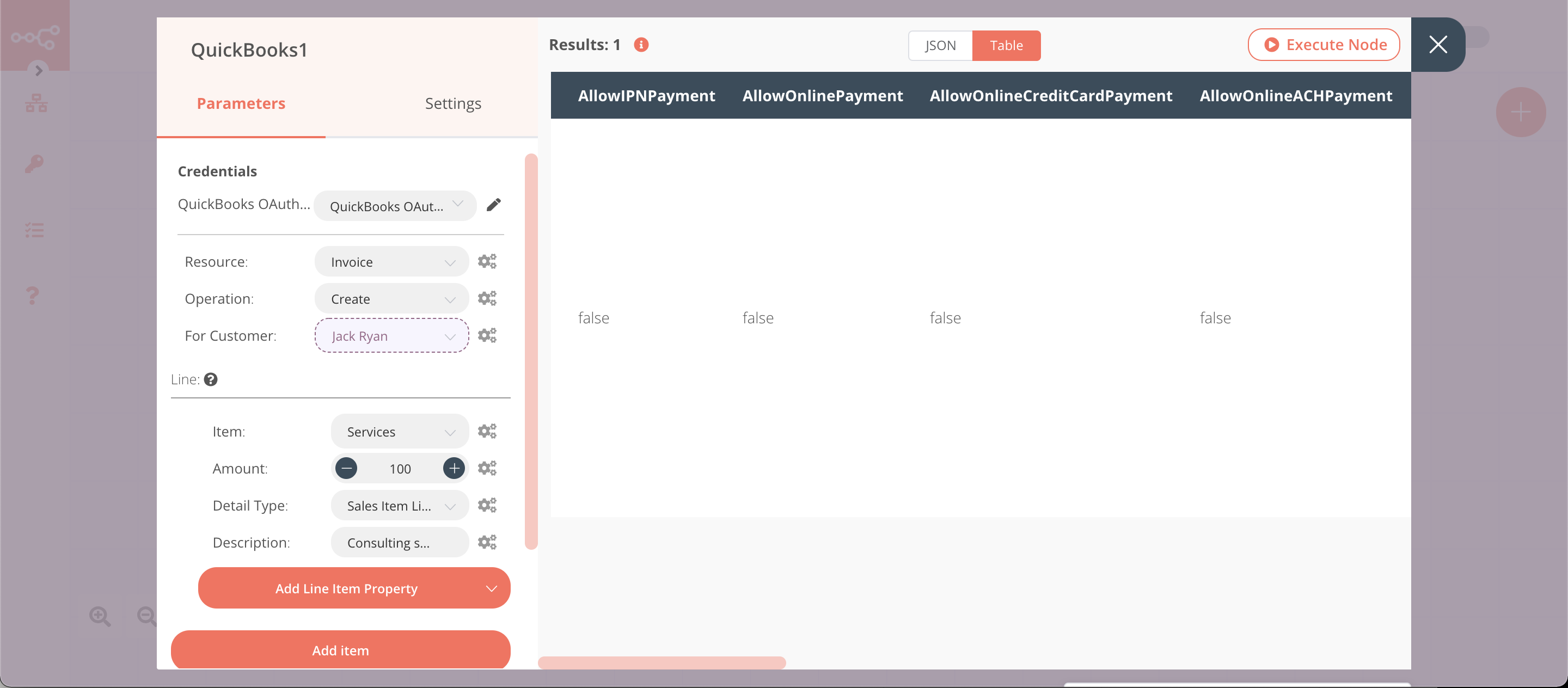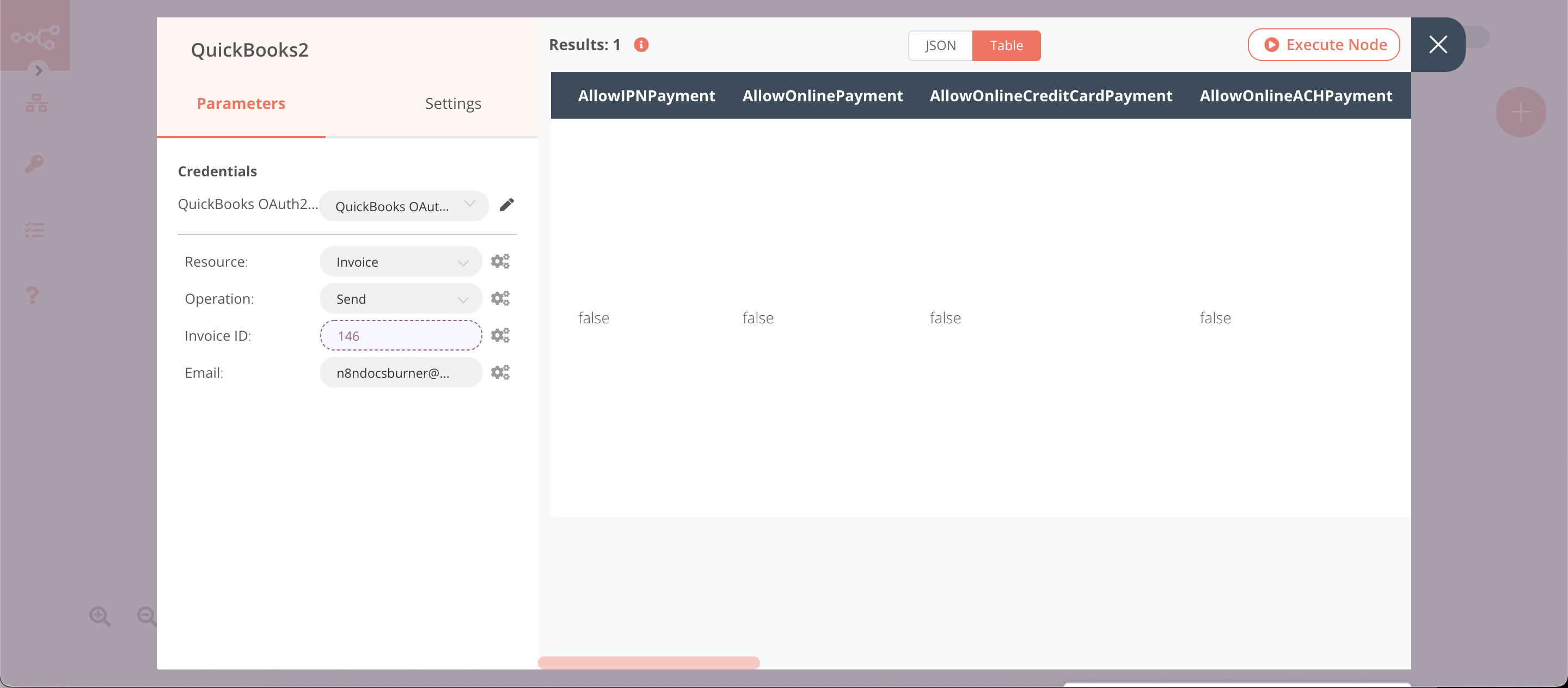QuickBooks#
QuickBooks is an accounting software package developed by Intuit.
Credentials
You can find authentication information for this node here.
Basic Operations#
- Bill
- Create
- Delete
- Get
- Get All
- Update
- Customer
- Create
- Get
- Get All
- Update
- Employee
- Create
- Get
- Get All
- Update
- Estimate
- Create
- Delete
- Get
- Get All
- Send
- Update
- Invoice
- Create
- Delete
- Get
- Get All
- Send
- Update
- Void
- Item
- Get
- Get All
- Payment
- Create
- Delete
- Get
- Get All
- Send
- Update
- Void
- Purchase
- Get
- Get All
- Transaction
- Get Report
- Vendor
- Create
- Get
- Get All
- Update
Example Usage#
This workflow allows you to create a customer and an invoice, and send the invoice to the customer. You can also find the workflow on n8n.io. This example usage workflow uses the following nodes. - Start - QuickBooks
The final workflow should look like the following image.

1. Start node#
The Start node exists by default when you create a new workflow.
2. QuickBooks node (create:customer)#
This node will create a new customer in QuickBooks.
- First of all, you'll have to enter credentials for the QuickBooks node. You can find out how to do that here.
- Select 'Create' from the Operation dropdown list.
- Enter a display name in the Display Name field.
- Click on the Add Field button and select 'Primary Email Address'.
- Enter the email address of the customer in the Primary Email Address field.
- Click on Execute Node to run the node.
In the screenshot below, you will notice that the node creates a new customer.

3. QuickBooks1 node (create:invoice)#
This node will create an invoice for the customer that we created in the previous node.
- Select the credentials that you entered in the previous node.
- Select 'Invoice' from the Resource dropdown list.
- Select 'Create' from the Operation dropdown list.
- Click on the gears icon next to the For Customer field and click on Add Expression.
- Select the following in the Variable Selector section: Current Node > Input Data > JSON > Id. You can also add the following expression:
{{$json["Id"]}}. - Click on the Add Item button.
- Select 'Item' from the Add Line Item Property dropdown list.
- Select an item from the Item dropdown list.
- Select 'Amount' from the Add Line Item Property dropdown list.
- Enter an amount in the Amount field.
- Select 'Detail Type' from the Add Line Item Property dropdown list.
- Select a type from the Detail Type dropdown list.
- Select 'Description' from the Add Line Item Property dropdown list.
- Enter a description in the Description field.
- Click on Execute Node to run the node.
In the screenshot below, you will notice that the node creates an invoice for the customer that we created in the previous node.

4. QuickBooks2 node (send:invoice)#
This node will send the invoice that we created in the previous node.
- Select the credentials that you entered in the previous node.
- Select 'Invoice' from the Resource dropdown list.
- Select 'Send' from the Operation dropdown list.
- Click on the gears icon next to the Invoice ID field and click on Add Expression.
- Select the following in the Variable Selector section: Current Node > Input Data > JSON > Id. You can also add the following expression:
{{$json["Id"]}}. - Enter the email address of the customer in the Email field.
- Click on Execute Node to run the node.
In the screenshot below, you will notice that the node sends the invoice to the customer.
